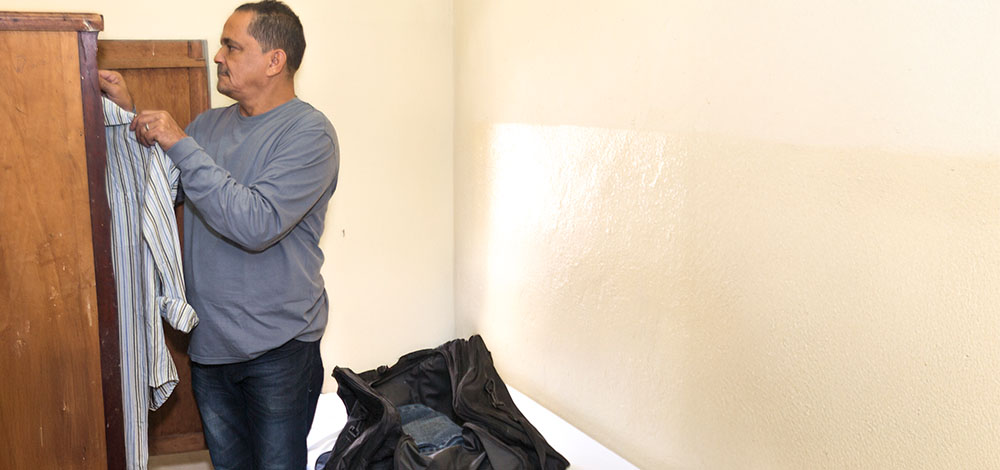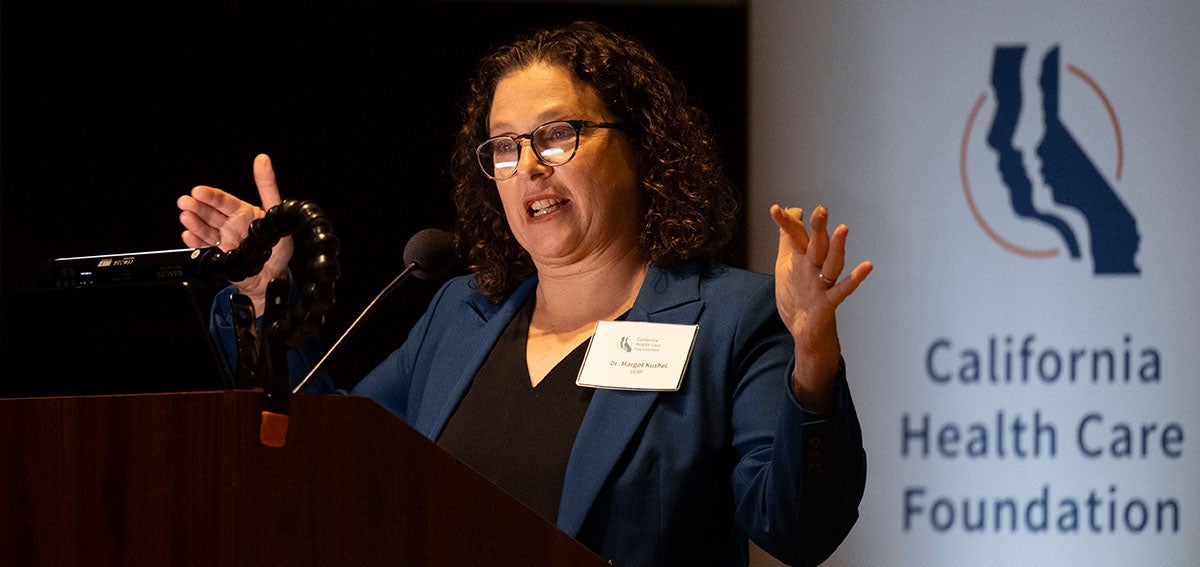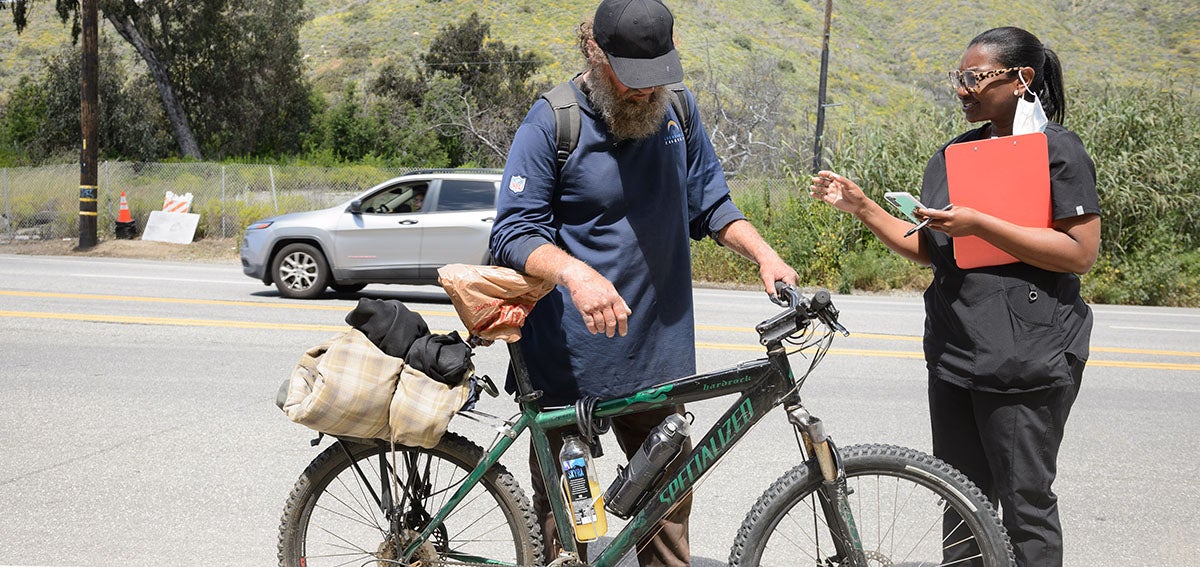|
Getting your Trinity Audio player ready…
|

While working as a physician at San Francisco General Hospital several years ago, I met a young woman I’ll call Kacey. At just 28 years old, Kacey had been admitted with congestive heart failure, which was probably caused by methamphetamine use. It was far too serious an illness for someone so young.
Kacey was experiencing homelessness at the time. She had a reputation among the medical staff for being “noncompliant,” and angered doctors whenever she would leave the hospital against medical advice.
I met Kacey during her fifth admission over a two-month period. As I got to know her, I learned that she was a survivor of unspeakable violence during a childhood of physical and sexual victimization. As a teen, she was sold for sex. The violence followed her into adulthood, and at the time we met, her partner had become her latest abuser. Kacey told me that using methamphetamines helped her cope.
It would be easy to hear a story like Kacey’s and fall into despair or cynicism. Instead, I want to share what we can learn from the accounts of people experiencing homelessness, which can and should inform innovative ways to improve health care so that people can become healthy and housed.
Violence, Health, and Homelessness Are Linked
I don’t need to remind anyone that California has a homelessness crisis. What is often overlooked is how prevalent it is for people experiencing homelessness to also be victims of violence.
In the landmark California Statewide Study of People Experiencing Homelessness, researchers recruited 3,200 people to complete an extensive survey. The results, released in June, showed that physical and sexual victimization are startlingly common throughout the lifetimes of people experiencing homelessness:
- Nearly 3 in 4 people (72%) experienced physical violence in their lifetime.
- Nearly 1 in 4 people (24%) experienced sexual violence.
- Nearly 1 in 2 cisgender women (43%) and nearly 3 in 4 transgender or nonbinary individuals (74%) experienced sexual violence.
We know that cumulative exposure to trauma is linked to unhealthy substance use and poor mental health, including depression and suicidal thoughts. We are also beginning to understand the link between adverse childhood experiences and the development of health conditions in adulthood, such as stroke, diabetes, chronic obstructive pulmonary disorder, heart disease, and cancer. Add in the significant risk factor of living in a state with a severe housing affordability crisis, and it’s no surprise that nearly half of the people surveyed reported being in fair or poor health. But this does not have to be the case.
The Health System Can Help People Become Healthy and Housed
The health system certainly cannot fix every contributor to the homelessness crisis, especially factors such as the underlying housing shortage or the prevalence of violence. But health care providers do have a role to play, and implementing these steps in health care settings can help.
1. Train staff in trauma-informed care
Once I learned more about the violence Kacey experienced, her reasons for continuing to leave the hospital became obvious. Medical care can be invasive and traumatizing. Unknown people are touching you; medical instruments are squeezing, prodding, or entering you. Kacey felt so exposed and terrified that she went into flight mode.
It is imperative that health staff be trained in trauma-informed care, which has been shown to improve health outcomes and enable patients to be engaged participants in their care. The Center for Health Care Strategies has an excellent Trauma-Informed Care Implementation Resource Center, which encourages providers to consider the importance of shifting the focus from “What’s wrong with you?” to “What happened to you?”
Health staff are not the only people who interact with people experiencing homelessness, either, and homeless services providers can likewise benefit from resources like this Trauma-Informed Organizational Toolkit (PDF).
2. Build out care delivery models that match patient needs
Kacey’s congestive heart failure was a complication of her use of methamphetamine to numb her pain. It is common for people to self-medicate to deal with pain and stress, especially with those exposed to violence and the trauma of living on the streets. By the time I saw Kacey, her physical and behavioral health had become a crisis, and her fear and distrust of the health system made it challenging to get her the care she needed.
Innovative care delivery models are bringing care directly to people where they are, which improves health outcomes and decreases reliance on emergency departments. They include offering both physical and behavioral health care in homeless shelters, in mobile health care clinics, and through street medicine. These models are easily accessible to patients and create the opportunity to build the trust that is essential for effective treatment.
Sobering centers also serve as an alternative to emergency departments and a bridge to substance use treatment. And all these models can serve as a hub for connecting patients to housing and health assistance.
3. Expand the capacity and use of post-hospitalization housing and support programs
Once Kacey was stabilized, she still needed continued treatment for her heart condition. That treatment would have been nearly impossible if we sent her back to the street or to her abuser.
Thankfully, she was able to move to medical respite care, also known as recuperative care. Medical respite programs offer an opportunity to break the cycle of homelessness by creating a pathway to housing and better health, and the National Institute for Medical Respite Care has a learning center offering guidance on everything from discharge planning to relationships with managed care organizations. Since I had established trust with Kacey in the hospital, medical respite care enabled me to continue providing the services she needed to stay alive.
Other solutions include CalAIM housing-related Community Supports, critical services that help many people locate, transition into, and remain healthy in permanent housing.
4. Ensure continuous Medi-Cal coverage
When people are in a health crisis, it is easy for day-to-day tasks to slip through the cracks. This is especially true for people like Kacey, whose focus was on getting healthy and housed.
As of April 2023 and the end of the COVID-19 public health emergency, it has been estimated that millions of Californians still eligible for Medi-Cal will lose coverage due to administrative hurdles. This population includes many individuals experiencing homelessness who can find themselves disenrolled because they lack a current address.
CHCF is working with the nonprofit Homebase to help homeless service providers keep their clients enrolled in Medi-Cal. The National Health Care for the Homeless Council has resources and policy recommendations (PDF) to ensure continuous coverage and reduce administrative burdens, as well.
Explore What Role You Can Play
When Kacey left our medical respite program, she said she was going to reunite with her boyfriend and search for her mother. Now, I don’t know what happened to her. Kacey’s heart failure was advanced, and, sadly, her prospects for long-term survival were not good. It’s heartbreaking to know that the health care system can’t save everyone, despite its best efforts.
Nonetheless, we can and should keep learning and improving so that the health care system can give others better chances to access services in places and ways that feel safe and before a crisis develops; to heal from trauma and get treatment for or reduce harm from unhealthy substance use; to feel a sense of agency; and to get on a pathway back to housing – or prevent homelessness in the first place. All those chances add up to change.
I invite you and your organization to learn more about the innovative solutions offered in the statewide study of people experiencing homelessness and to explore what part you can play. Listen to the stories of real people experiencing homelessness, and see if their experiences inspire any different ideas.
If each of us plays our part, we can build a future where the different systems work together so Californians experiencing homelessness can become housed and healthy.
Authors & Contributors


Jessica Brandi Lifland
Jessica Brandi Lifland is a freelance photographer, instructor of journalism at City College of San Francisco, and mother. Her work with publications and nonprofits such as Operation Smile, Tostan, and the California Health Care Foundation has taken her all over the world, including West Africa, the Middle East, Kosovo, Burma, Haiti, and South America.
For two decades she has been photographing the National Cowboy Poetry Gathering and has been working on a long-term project documenting the lives of the cowboy poets of the American West in affiliation with the Western Folklife Center. She plans to make her project into a book.




